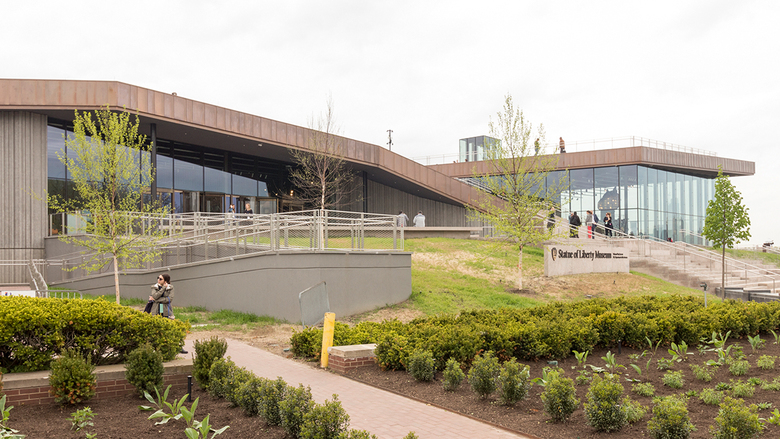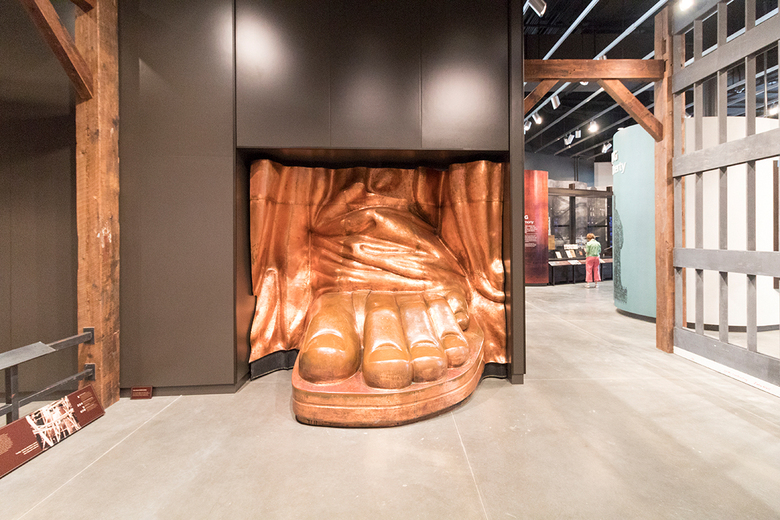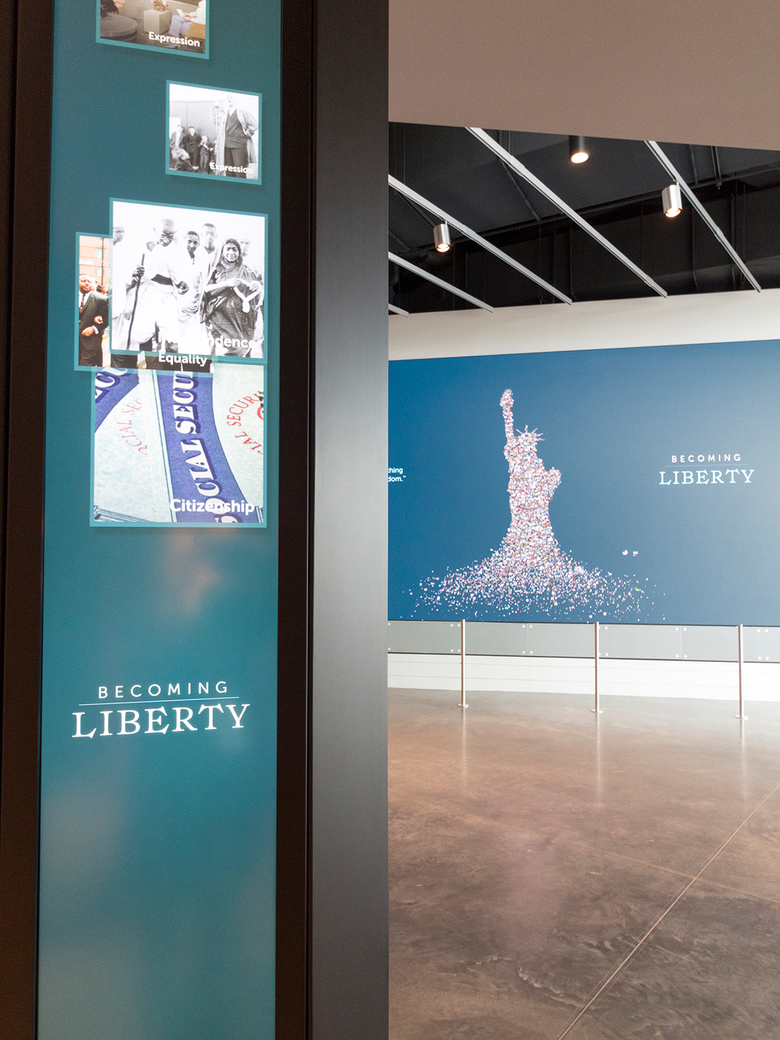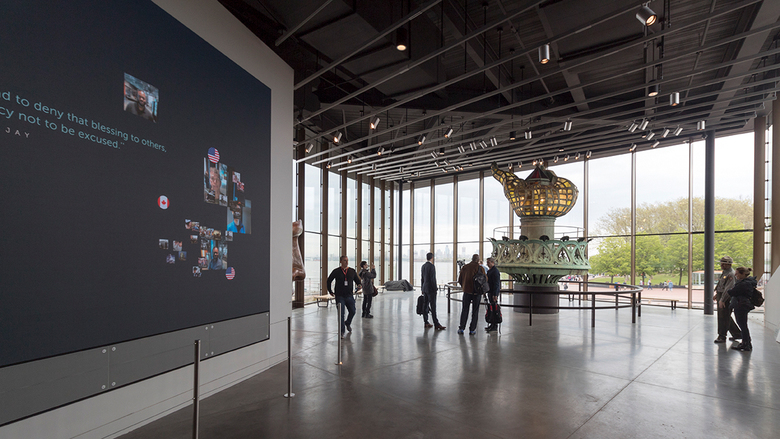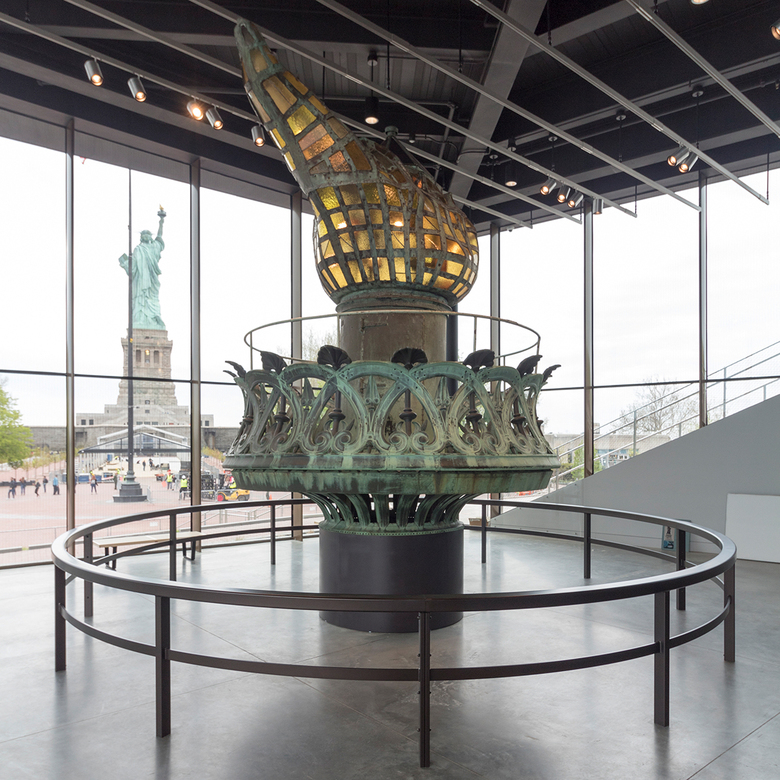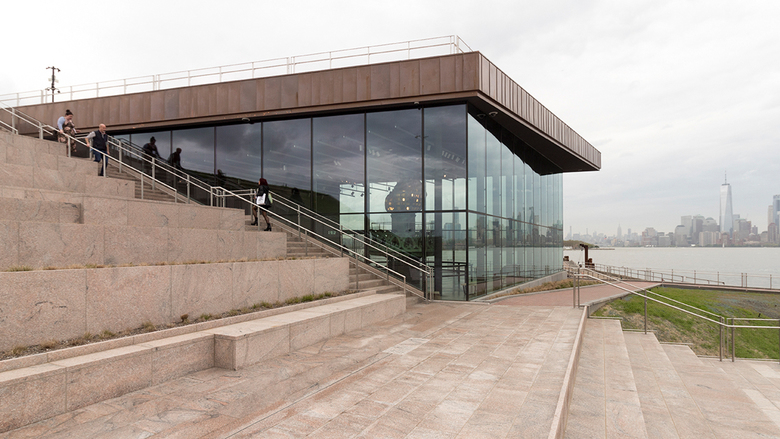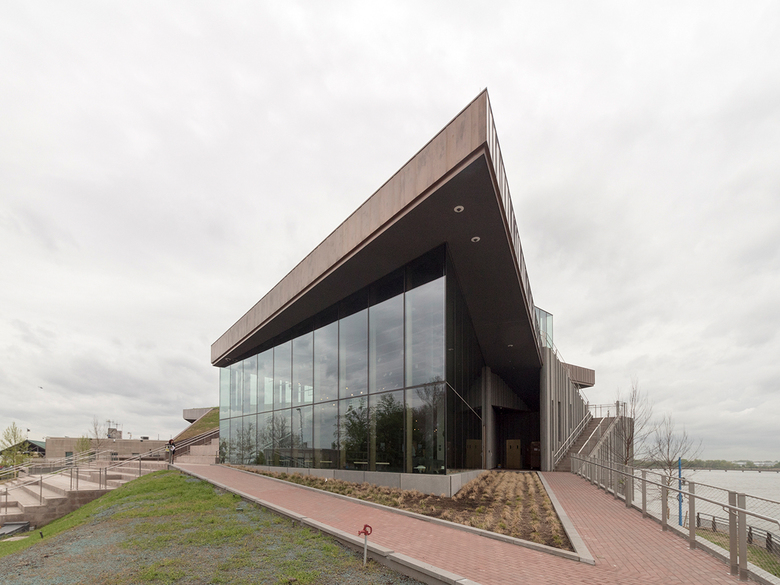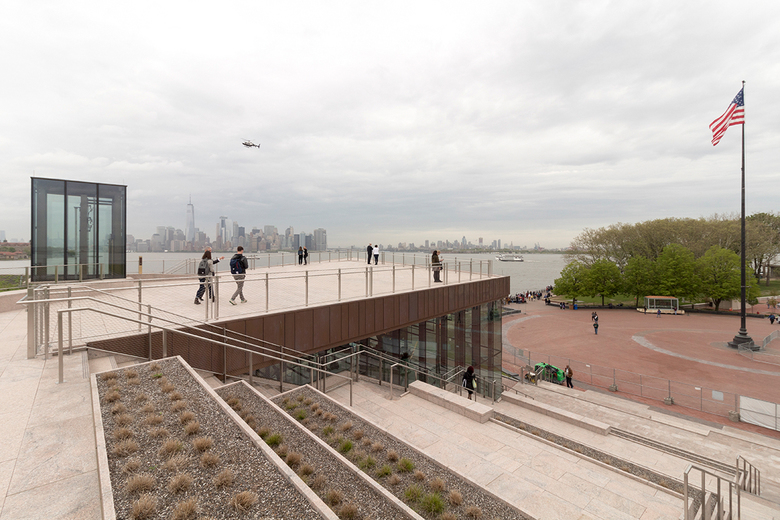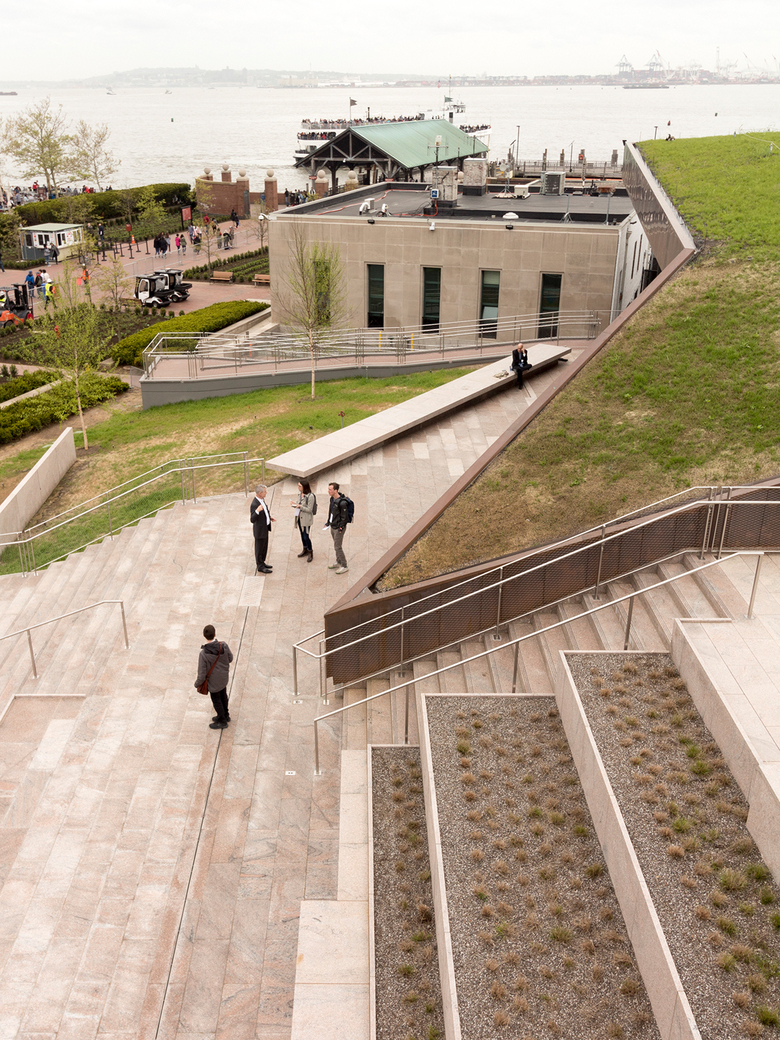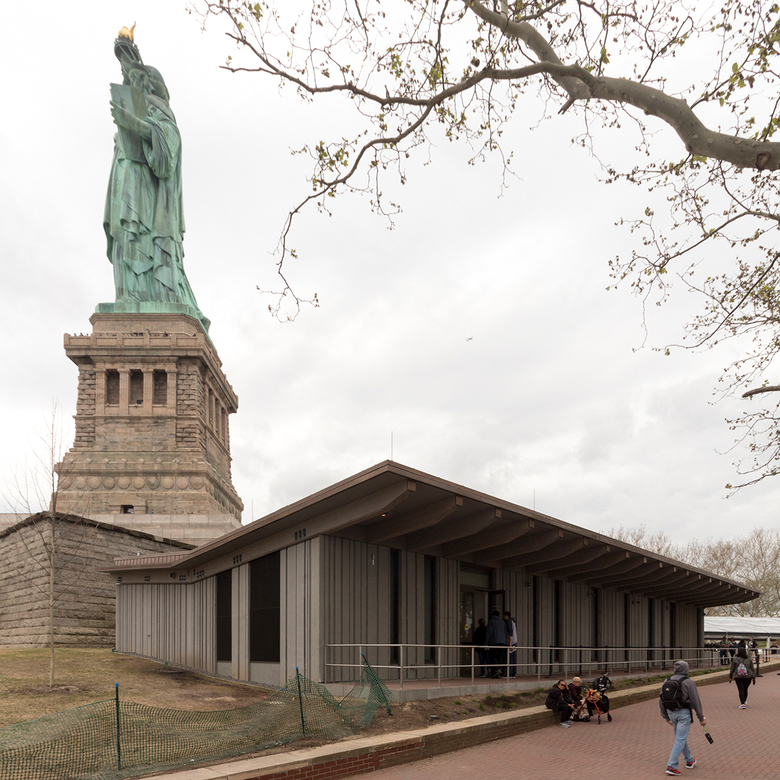Statue of Liberty Museum Opens
All photographs by John Hill/World-Architects
The Statue of Liberty Museum, which broke ground in October 2016, opens to the public on May 16, 2019 on Liberty Island. The 26,000-sf building offers three galleries, the famous statue's original torch, and an accessible green roof.
Most Americans agree that the Statue of Liberty in New York Harbor is the symbol of liberty, but agreeing on the meaning of liberty is something else entirely. The contested and ever-changing meanings of the term are one reason behind the museum, which is free for visitors who purchase tickets to ferry over to Liberty Island.
Designed by FXCollaborative, who conceived of the Statue of Liberty Museum as a "garden pavilion," the small one-story building tucked into the northwest corner of island sits low but is intentionally lifted a few feet above the 500-year floor plain. Visitors therefore ascend steps or a ramp to access the building, which has more exterior steps (or an elevator) up to the roof for panoramic views of the Statue of Liberty, New York Harbor, and the Manhattan skyline.
Inside, a trio of galleries, designed with ESI Design, immerses visitors in the history, design, and construction of the statue and gives people a chance to express what liberty means to them.
World-Architects got a sneak peek of the Statue of Liberty Museum on a gray day a week before its opening. Below is our tour through the building.


The museum faces Flagpole Plaza and appears inviting in the articulation of its glass walls and exterior steps.
A ramp, at left, provides an accessible route to the raised building.
Opposite the entry doors inside the museum is the donor wall ($2 million minimum donation to be listed here). Behind the undulating wall is the Immersive Theater, the first of the three galleries.
The second gallery, the Engagement Gallery, features numerous artifacts on Frédéric-Auguste Bartholdi's design of the statue and architect Richard Morris Hunt's design of the pedestal, including a full-size replica of the foot that visitors can touch.
The Inspiration Gallery, the third of the three galleries, is made up of ten double-sided digital kiosks with touch screens. Here, visitors can select photos that express liberty to them, after which the photos are "sent" to a large screen at the end of the gallery and converge into a portrait of Liberty.
Beyond the large screen is the museum's main attraction: the Statue of Liberty's original torch, which was removed during the 1986 restoration of the statue (coinciding with its 100th anniversary) and placed in the old museum in the statue's base.
The torch, which was cut up over time and therefore replaced with a new one in 1986, was moved to the new museum in November 2018. Three walls of bird-friendly glass wrap this space to provide a panoramic view that includes the Statue.
Back outside, exterior steps next to the old torch draw people to the roof.
The angular prow of the gallery housing the torch: there are very few right angles in the plan of the museum. The path at right leads to an elevator that takes visitors to the roof.
The roof at the top of the steps has panoramic views of Lower Manhattan and...
...the Statue of Liberty herself.
FXCollaborative's intention of merging building and landscape (the latter done with Quennell Rothschild & Partners) is most evident when the museum is seen from the roof.
The base of the museum is covered in precast concrete panels with vertical striations that are meant to recall the landscape of New Jersey overlooking the Hudson River. Integrated into them are barely visible, narrow slots that admit high water in to a cavity space below the level of the museum.
Next to the Statue of Liberty is the new Secondary Screening Facility, which was also designed by FXCollaborative with matching precast concrete and opened in February 2019.


